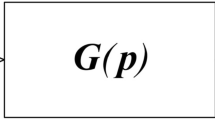Abstract
The floating frame of reference techniques is an established technique to incorporate flexibility in multibody models. The model dimension of the body flexibility models can be reduced by model reduction techniques such as Component Mode Synthesis (CMS) or Krylov subspace-based techniques, but the efficiency of these techniques is limited by the number of interface nodes in which the flexible body is or can be loaded. A common solution to this problem is condensing the different nodes of a given interface surface into a single node, which represents the net motion of the interface surface. Commercial finite element packages offer two modeling techniques to condense interface surfaces: rigid multipoint constraints and interpolation multipoint constraints. Rigid multipoint constraints will typically result in stiffness overestimation, whereas interpolation multipoint constraints will lead to an underestimation. Which approximation of both is most suitable depends on the application. However, the default definition of interpolation multipoint constraints does not allow generation of reduced body flexibility models for multibody models. This paper gives a theoretical background of the problem cause, and offers a practical solution. The two modeling techniques result in significantly different approximations of the body flexibility dynamics, as is shown in a numerical example.
Similar content being viewed by others
References
Wasfy, T.M., Noor, A.K.: Computational strategies for flexible multibody systems. Appl. Mech. Rev. 56, 553–613 (2003)
Schwertassek, R., Wallrapp, O., Shabana, A.A.: Flexible multibody simulation and choice of shape functions. Nonlinear Dyn. 20, 361–380 (1999)
Cardona, A.: Superelements modelling in flexible multibody dynamics. Multibody Syst. Dyn. 4, 245–266 (2000)
Milne, R.D.: Some remarks on the dynamics of deformable bodies. AIAA J. 6, 556–558 (1968)
Agrawal, O.P., Shabana, A.A.: Dynamic analysis of multibody systems using component modes. Comput. Struct. 21, 1303–1312 (1985)
Kim, S.S., Haug, E.J.: Selection of deformation modes for flexible multibody dynamics. Mech. Struct. Mach. 18, 565–585 (1990)
Friberg, O.: A method for selecting deformation modes in flexible multibody dynamics. Int. Numer. Methods Eng. 32, 1637–1655 (1991)
Yoo, W.S., Haug, E.J.: Dynamics of flexible mechanical systems using vibration and static correction modes. J. Mech. Transm. Autom. Des. 108, 315–322 (1986)
Craig, R.R.: A review of time-domain and frequency-domain component mode synthesis methods. J. Modal Anal. 2, 59–72 (1987)
Lehner, M., Eberhard, P.: On the use of moment-matching to build reduced order models in flexible multibody dynamics. Multibody Syst. Dyn. 16, 191–211 (2006)
Koutsovasilis, P., Beitelschmidt, M.: Comparison of model reduction techniques for large mechanical systems. Multibody Syst. Dyn. 20, 111–128 (2008)
Fehr, J., Eberhard, P.: Improving the simulation process in flexible multibody dynamics by enhanced model order reduction techniques. In: Proceedings of the ECCOMAS Thematic Conference in Multibody Dynamics, Warsaw, Poland, June 29–July 2 (2009)
Grimme, E.J.: Krylov projection methods for model reduction. Ph.D. thesis, University of Illinois, Urbana (1997)
Lehner, M., Eberhard, P.: A two-step approach for model reduction in flexible multibody dynamics. Multibody Syst. Dyn. 17, 157–176 (2007)
Peeters, J.: Simulation of dynamic drive train loads in a windturbine. Ph.D. thesis, Katholieke Universiteit Leuven (2006)
Gnanakumarr, M., Theodossiades, S., Rahnejat, H., Menday, M.: Impact-induced vibration in vehicular driveline systems: theoretical and experimental investigations. Proc. Inst. Mech. Eng., Part K, J. Multibody Dyn. 219, 1–12 (2005)
Fichera, G., Lacagnina, M., Petrone, F.: Modelling of torsion beam rear suspension by using multibody method. Multibody Syst. Dyn. 12, 303–316 (2004)
Albers, A., Ottnad, J., Weiler, H., Häussler, P.: Methods for lightweight design of mechanical components in humanoid robots. In: IEEE-RAS 7th International Conference on Humanoid Robots, November 29–December 1, Pittsburg, PA, USA (2007)
Helsen, J., Heirman, G., Vandepitte, D., Desmet, W.: The influence of flexibility within multibody modeling of multi-megawatt wind turbine gearboxes. In: Proceedings of ISMA2008 International Conference on Noise and Vibration Engineering, September 15–17, Leuven, Belgium (2008)
Helsen, J., Vandepitte, D., Desmet, W., Peeters, J., Goris, S., Vanhollebeke, F., Marrant, B., Meeusen, W.: From torsional towards flexible 6 DOF models for dynamic analysis of wind turbine gearboxes. In: Proceedings of the European Wind Energy Conference and Exhibition, March 16–19, Marseille, France (2009)
Ashley, H.: Observations on the dynamic behaviour of large flexible bodies in orbit. AIAA J. 5, 460–469 (1967)
Author information
Authors and Affiliations
Corresponding author
Rights and permissions
About this article
Cite this article
Heirman, G.H.K., Desmet, W. Interface reduction of flexible bodies for efficient modeling of body flexibility in multibody dynamics. Multibody Syst Dyn 24, 219–234 (2010). https://doi.org/10.1007/s11044-010-9198-7
Received:
Accepted:
Published:
Issue Date:
DOI: https://doi.org/10.1007/s11044-010-9198-7




